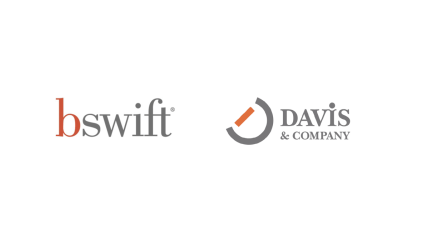
Organizations face change every day—new business strategies, emerging technologies, pressures from competitors or customers…the list goes on—and yet we often struggle to make change stick.
Even a small change can prompt resistance from employees, who grow accustomed to the way things are or have limited knowledge of the situation. In the absence of clear details, employees turn to the rumor mill or speculate—often jumping to worst-case scenarios.
Enter transparency. Our years of research with employees tell us that transparency is a driver of satisfaction with communication. It’s a key ingredient to helping employees accept and act on a change.
The Cambridge Dictionary defines transparency as, “A situation in which business and financial activities are done in an open way without secrets, so people can trust they are fair and honest.” When we speak with employees about transparency, they talk about “leaders hiding behind complicated language” or “decisions behind closed doors.” For them, transparency means being treated as an adult and participating in communication that is open, upfront and straightforward.
Of course, not every detail of a change can be shared—especially confidential or sensitive changes in regulated industries or with publicly traded companies. But, at its foundation, transparent change communication covers what’s changing, why and its impact.
Let’s dive into seven strategies designed to encourage transparent communication during a change. Then, I’ll explore real-life change examples and how to overcome transparency challenges.
7 strategies to encourage transparent communication during a change
Avoid the typical traps that prevent transparency with change communication, such as using complicated language or failing to communicate because decisions are still being made. These seven strategies will encourage open and honest communication, whether you’re drafting a launch email for your change or coaching a leader before a town hall.
- Explain why. Chances are decision-makers gave your change a lot of thought before they were ready to share. Now it’s time to bring the organization up to speed—starting with why. Set the stage with context—the big picture. Often, it’s helpful to explain the process; that is, how we got to this decision. And, finally, share potential outcomes if the change is not completed.
- Appeal to the heart. While facts and figures help, they won’t convince an employee to do something differently. Set a vision about what your organization wants to achieve—such as zero accidents every year—and share stories about achieving that goal.
- Be clear. When a change launches, details are often fuzzy since they’re still being figured out. Employees, however, want specific details and impact by group. If you can’t be specific in the beginning, acknowledge the gaps (“Here’s what we don’t know.”) and explain the process to get there, including when details will be available.
- Be visible. We see this frequently with change: leaders hunker down and focus on getting things done. Instead, leaders should be visible: meeting with teams, discussing challenges and listening.
- Encourage conversation. Asking questions is a key way employees learn about a change and accept it. By encouraging conversation, you’ll get everything on the table—from anxieties and concerns to assumptions, so they can be addressed.
- Enable participation. Telling employees to change is less effective than asking them how to change. Find opportunities to involve employees—from brainstorming barriers to the change to developing new ways of working. Involvement is the true definition of engagement.
- Collect feedback. Asking signals you care and being heard builds engagement. Gather questions, ask about progress, and identify successes and barriers. But, most importantly, act on the feedback and talk about it.
Real-life change examples and how to address their transparency challenges
Returning employees to the office: During 2020, millions of people around the world were forced to work from home. But when discussions begin about returning to the office, many companies face resistance because employees are attached to the flexibility of remote work while others are concerned for their safety in the workplace. The most effective return-to-the-office strategies share the reason behind the decision, set clearly defined policies, including impact on employees and involve employees in the policy-forming process.
Undergoing an organizational change: Organizational changes cover many topics—from a new leader and reporting changes to mergers and acquisitions (M&A). While the topics may differ, organizational changes have one thing in common: uncertainty. With uncertainty comes anxiety and resistance to change. The more you help employees manage the uncertainty (updated milestones, decisions to make, how decisions will be made), the better employees will adapt to the change. Start with employees’ first line of communication: their managers. Facilitate a workshop, so managers are prepared to answer questions. And help managers and leaders deliver a consistent story by sharing key messages.
Rolling out a new system or process: While new system upgrades can increase efficiency, accuracy and cut costs, unexpected changes, such as delays, can get in the way of making change stick. Before employees turn to the rumor mill, take care to communicate openly with them about changes, risks or delays to the rollout. Specifically, define each issue, including cause and impact. Be sure to include actions employees should take (if any), new and updated milestones, and refreshed timelines.
Implementing a new business strategy: Your business strategy articulates how your organization will achieve its goals, so understanding and adoption among all employees are vital. You want everyone rowing in the same direction and it starts with leaders. Help them deliver consistent messages about the strategy, simplify how the strategy is explained, translate how the strategy applies to their teams, and talk about successes and challenges.
Making changes to benefits: Company benefits and total rewards are always changing—sometimes it’s a new or improved benefit, but often we’re dealing with increased costs. Start by helping employees see the big picture—all available benefits, including what the company provides and what employees contribute. Then help employees navigate changes by sharing options, including the pros and cons of each, and tools to help them understand personal impact. And stay in touch with what employees want from benefits; for example, are they willing to give up one benefit for another? Or perhaps, mental health is now a priority when it wasn’t in the past.
Why focus on transparency in change communication? It builds trust. And trust sets the stage for acceptance and engagement.





